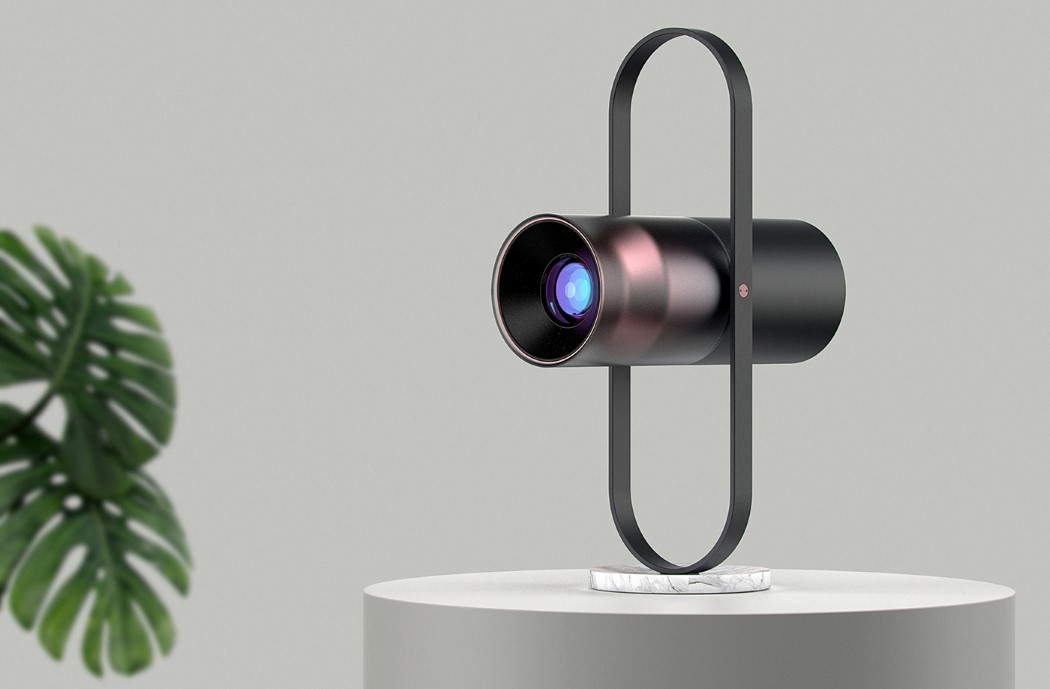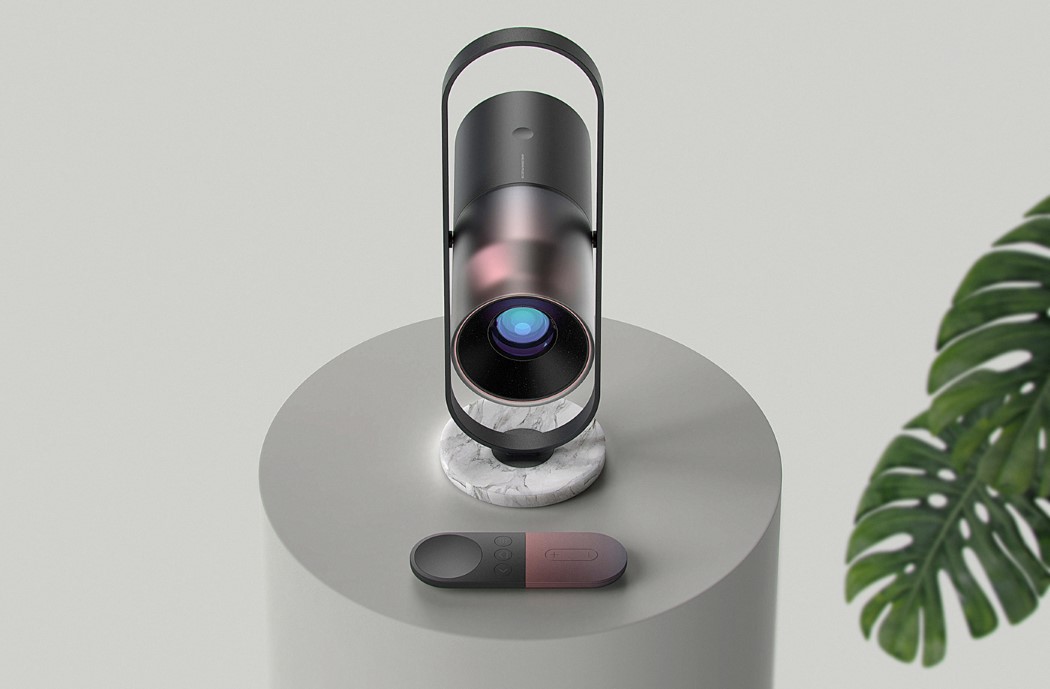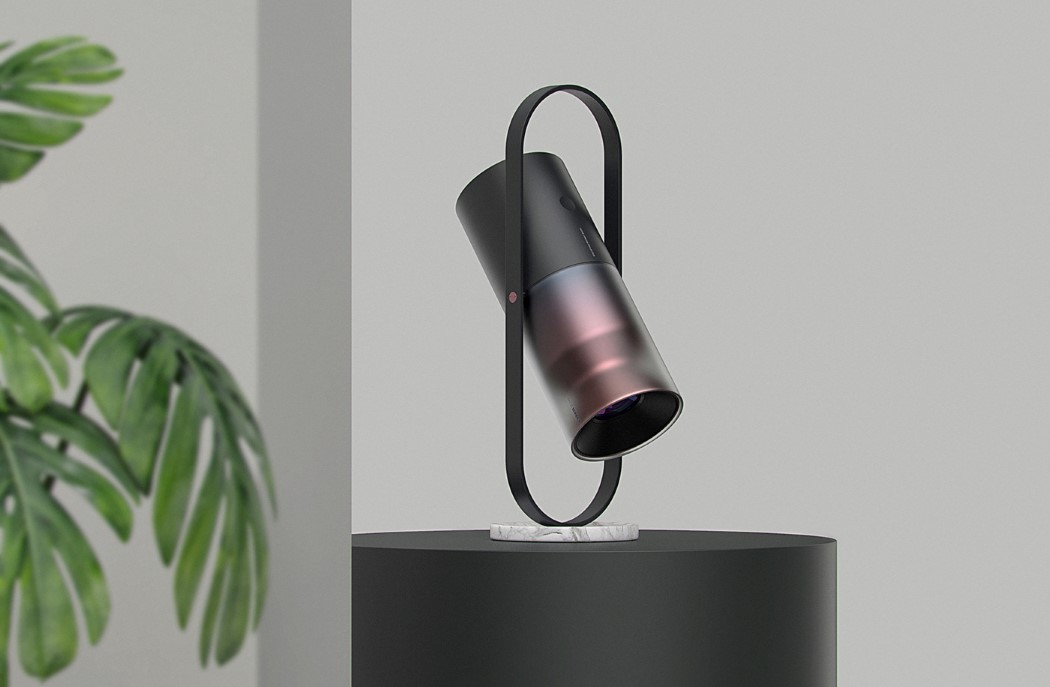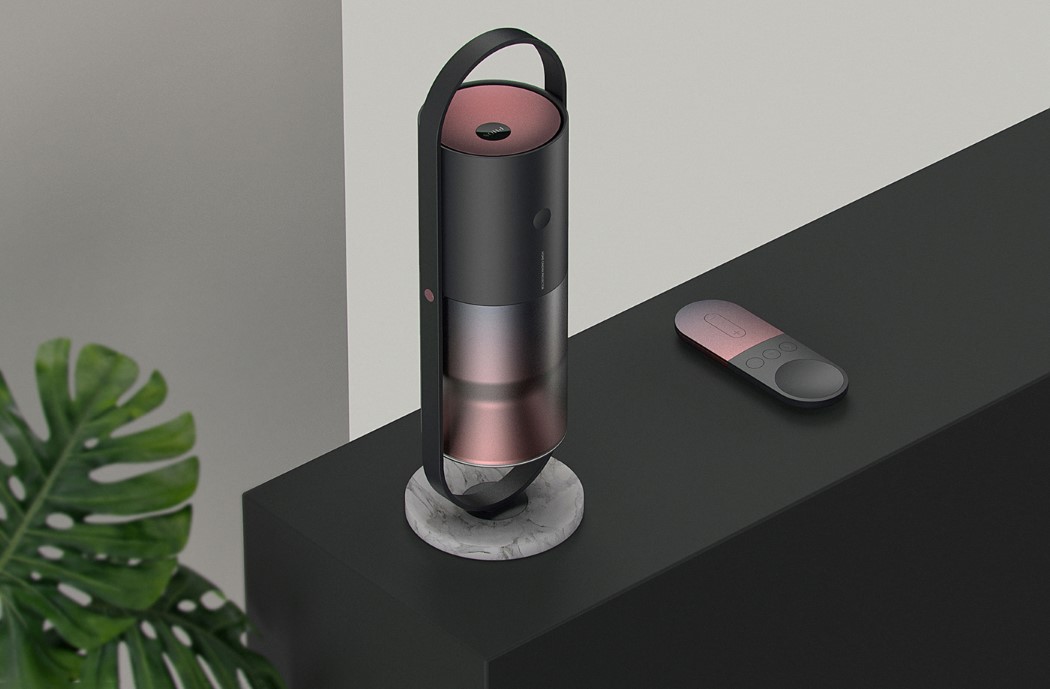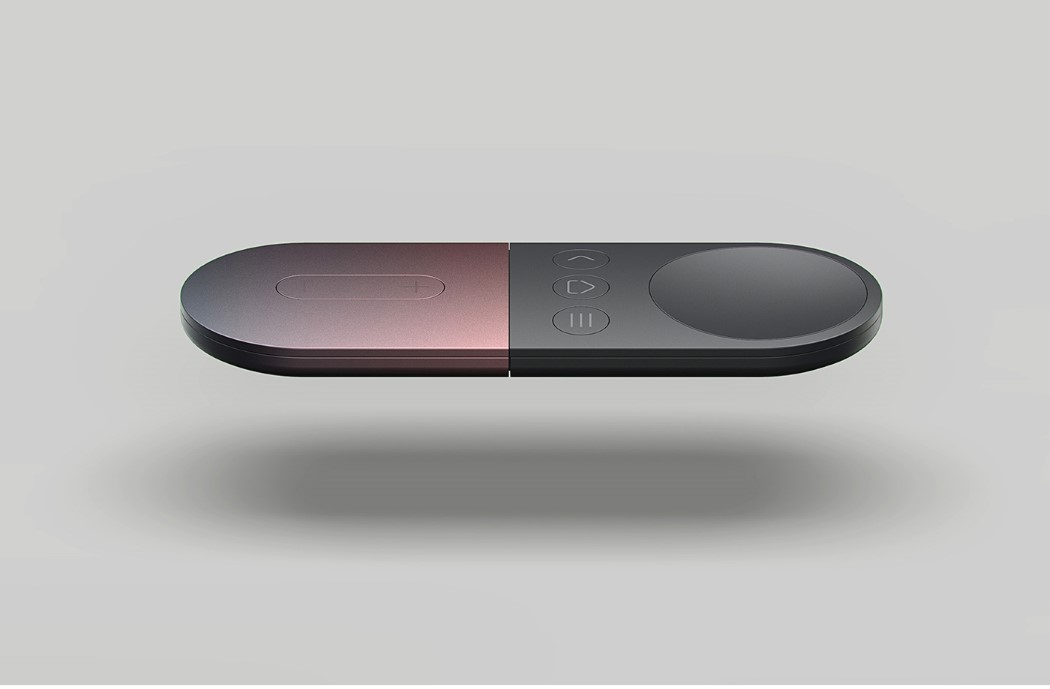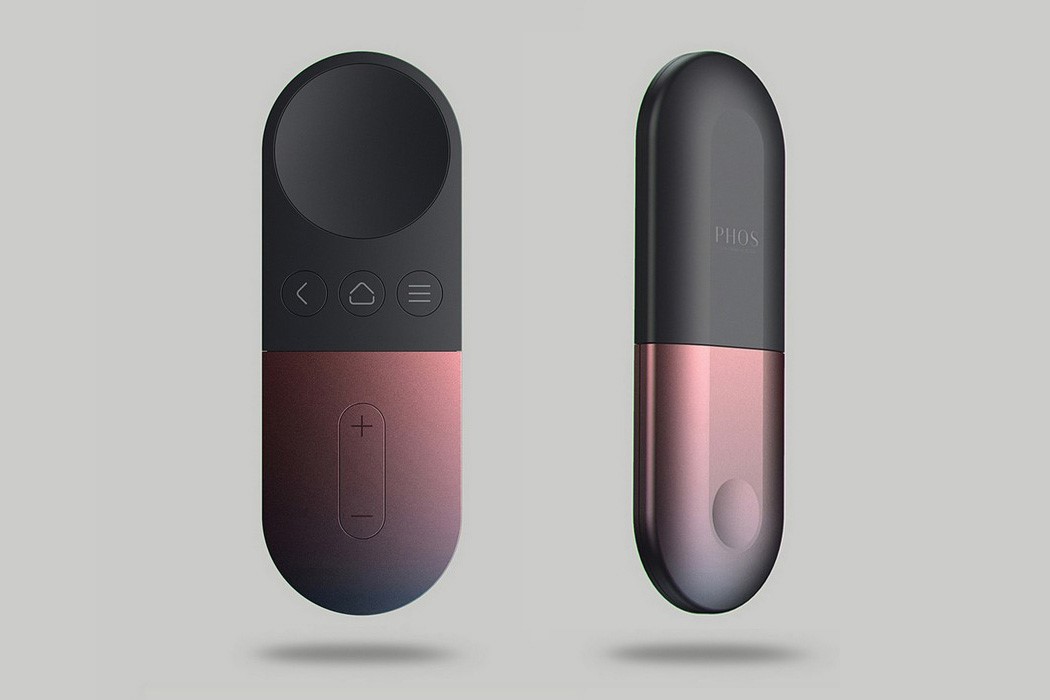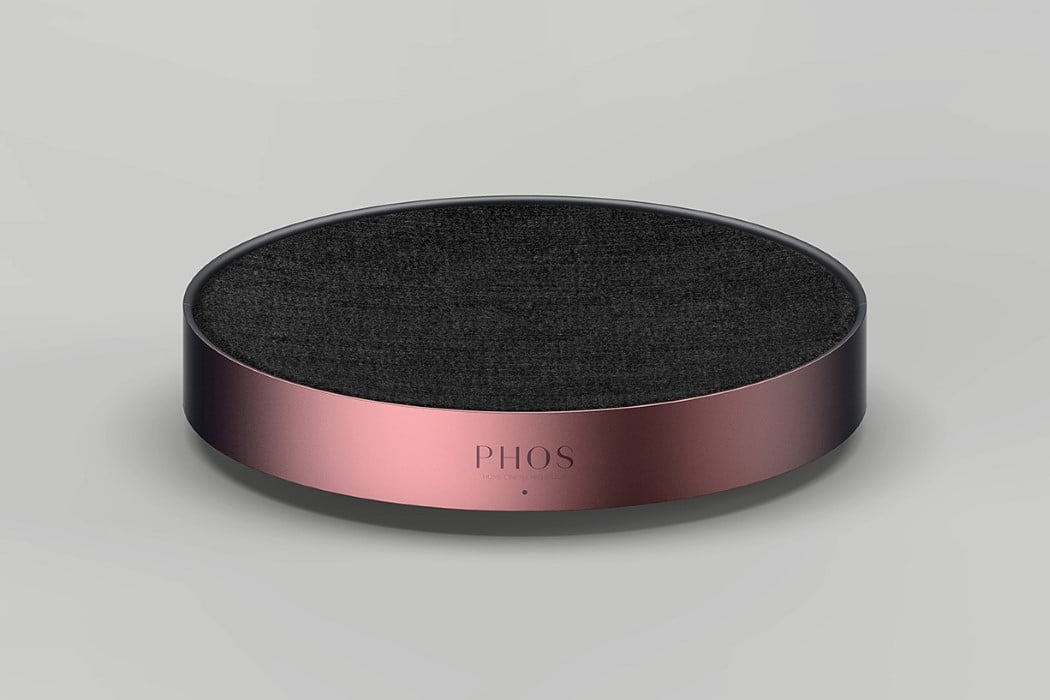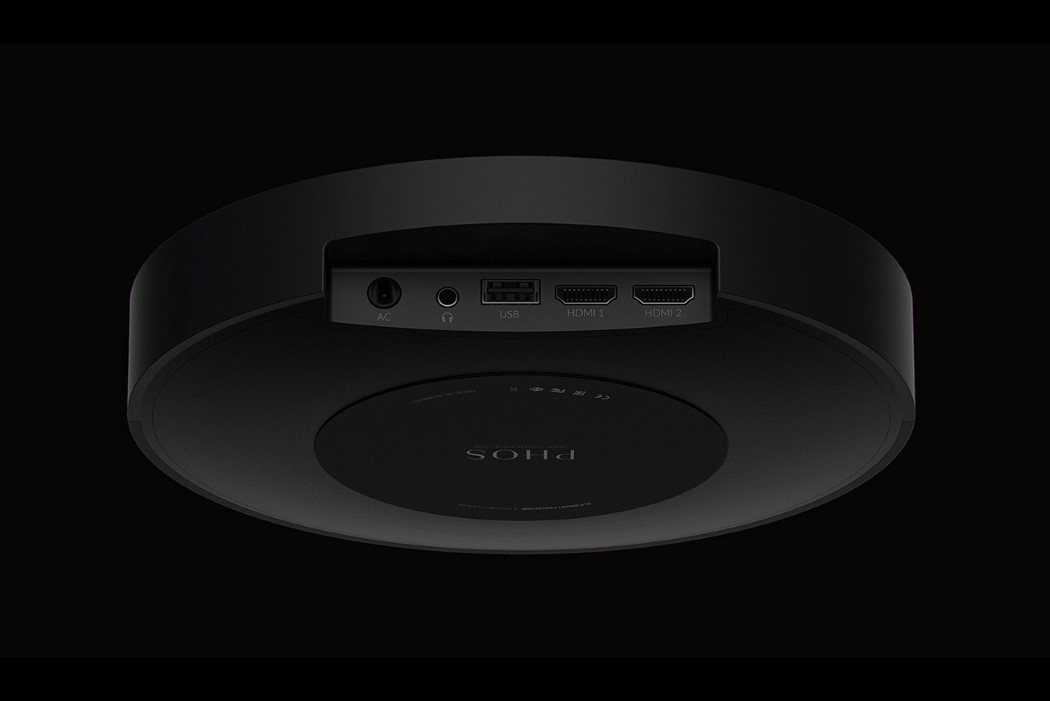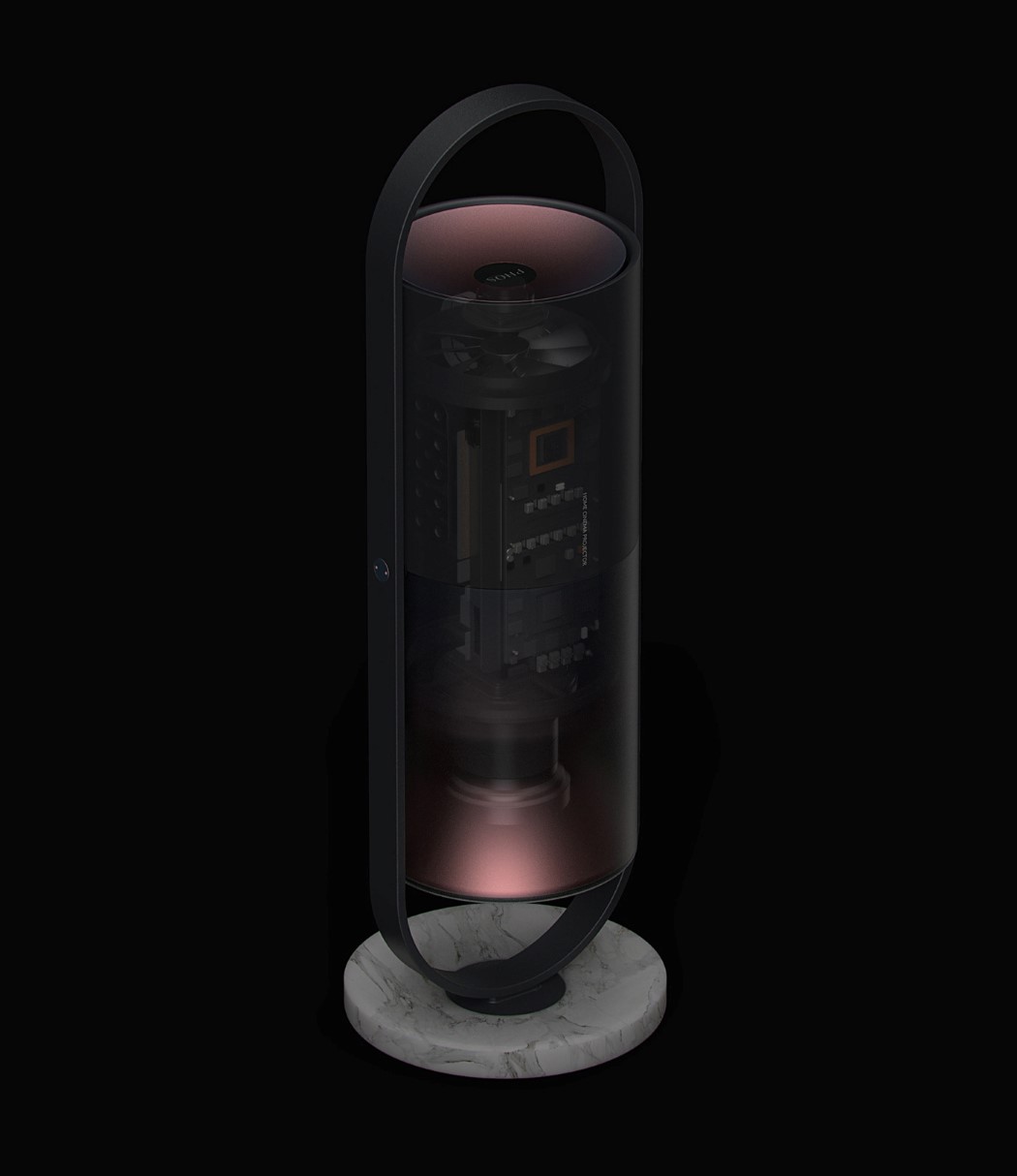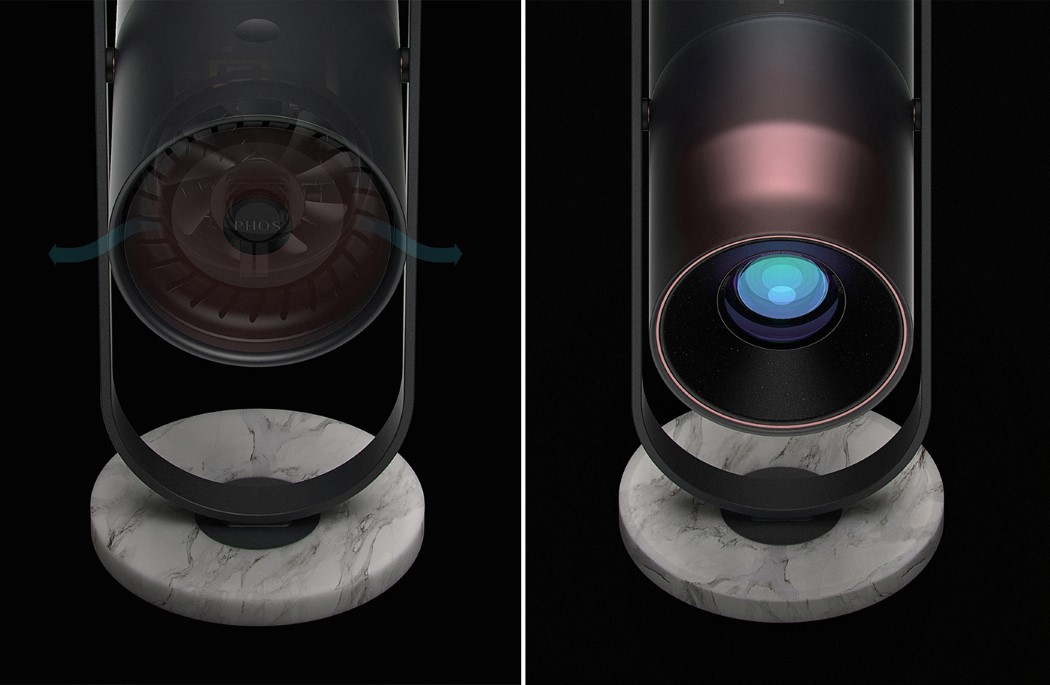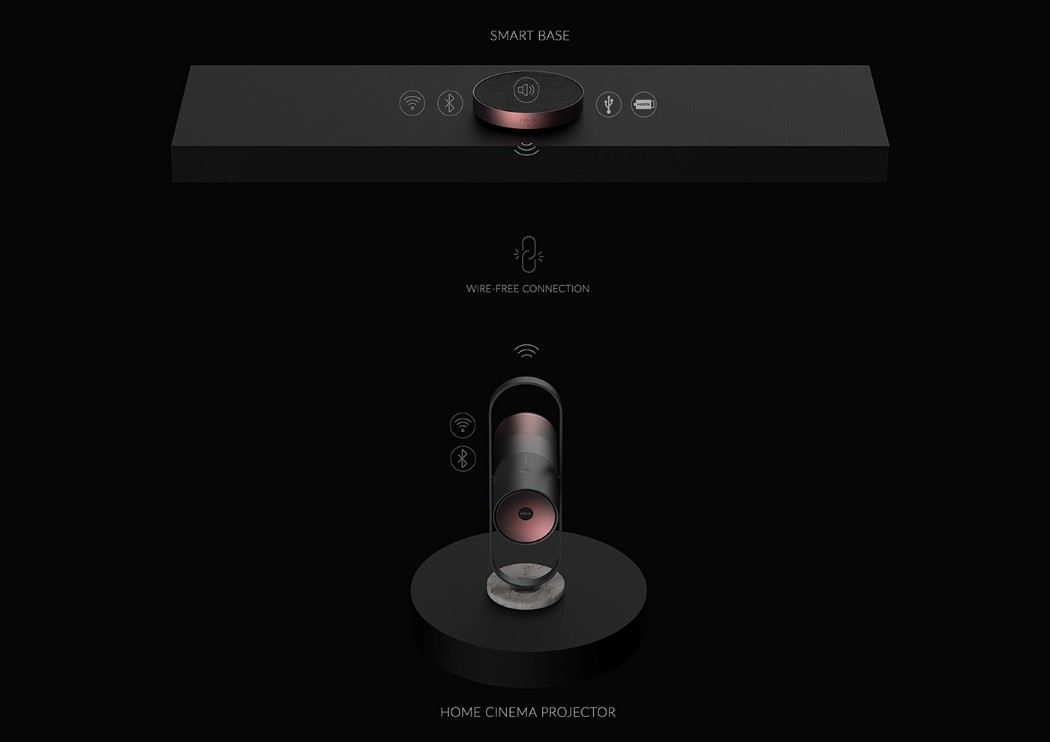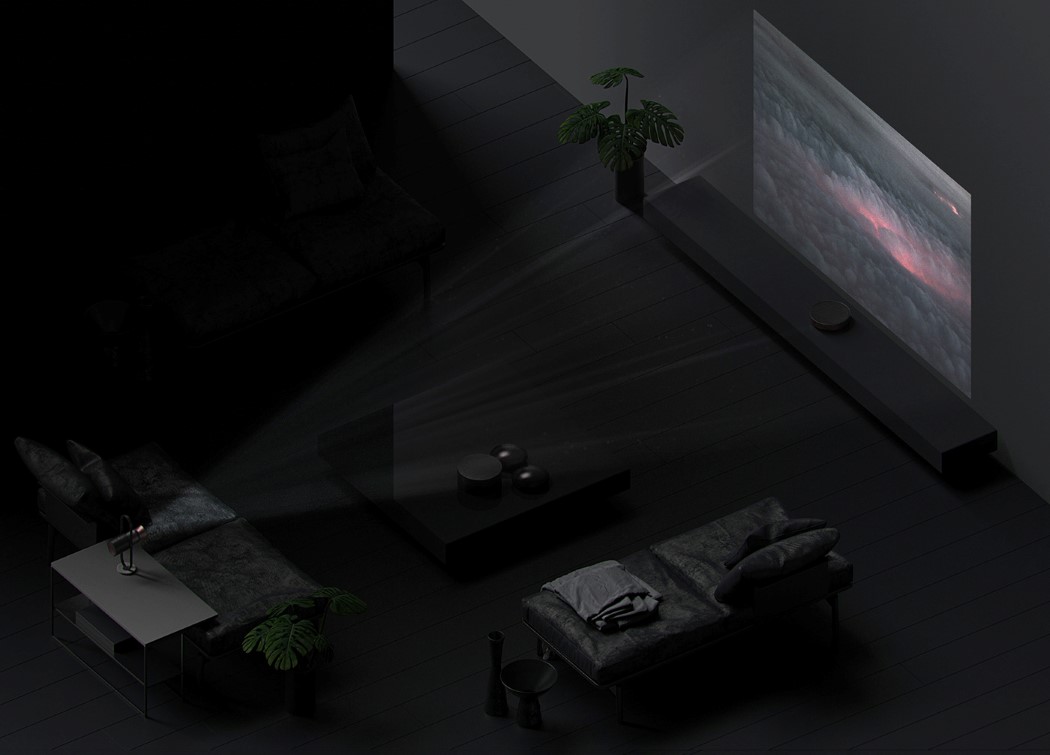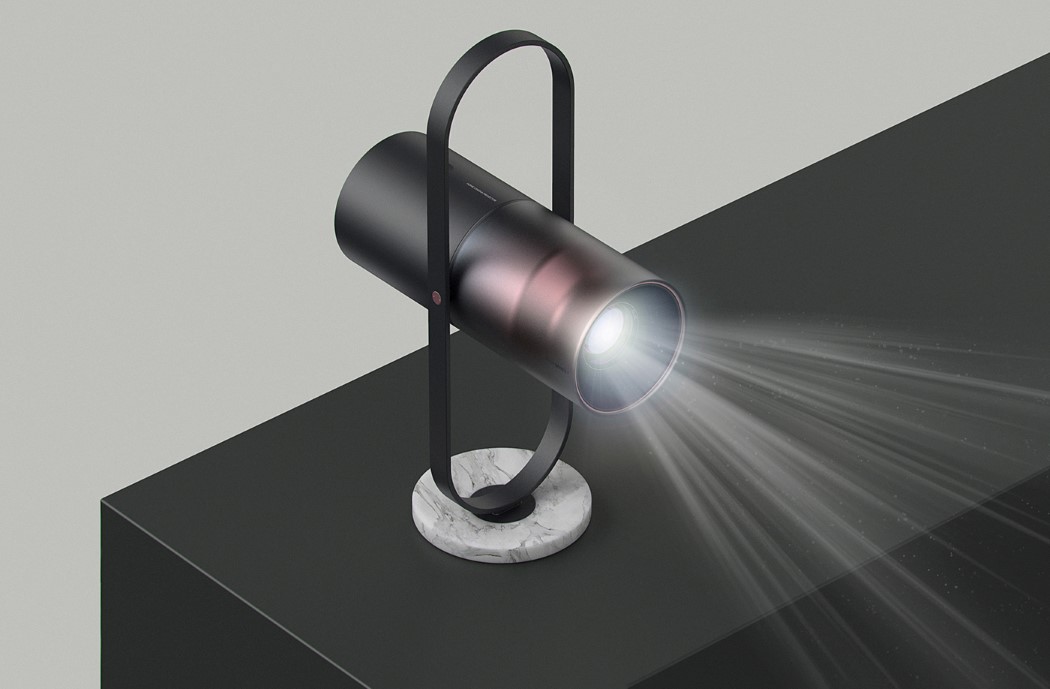
How do you make a projector that looks like a cross between a telescope and an artistic, sculptural element integrated into your decor? You take a lesson from the PHOS, a home-cinema projector that I can, with conviction, say is one of the most beautiful pieces of tech I’ve seen. The PHOS, unfortunately conceptual, is the brain-child of Jacopo Mauro, who believed appliances could be made to look absolutely addictive… and he’s right. With its capsule-shaped frame, rotating cylindrical projector, use of matte metallic gradients and frosted glass, and lastly, a marble base for the perfect premium touch, the PHOS is pure eye-candy.
The projector stands vertically, occupying a fraction of the space most projectors do, and when switched on, rotates to aim forward at an angle that best suits the space it’s in. It comes with an equally gorgeous, minimal remote controller that lets you control the projector and media playback, as well as a smart-base to point your remote at, that sits in front of you. The smart-base controls the projector and beams media to it over Wi-Fi, essentially making it easier to to point a remote towards the front while the projector sits behind you. The smart-base even houses the hi-fi speakers that deliver rich sound to complete your viewing experience, while the DLP projector behind you can focus (no pun intended) on what it does best… delivering crisp, clean visuals while absolutely looking like a sheer treat for the eyes!
Designer: Jacopo Mauro
